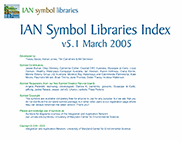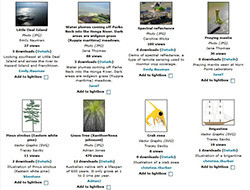IAN Science Communication Intern Program
Bill Dennison ·
IAN has developed an intern program: a short-term, immersive and experiential education in science communication applications. IAN interns typically come from a diversity of good undergraduate programs and many of them go on to a diversity of good graduate programs following their IAN internship. IAN interns develop a range of job skills, master various software, and fully integrate into the IAN program for several months and up to a year. Interns work directly with the all of the IAN staff including the Vice President for Science Applications, IAN Science Integrators and Science Communicators.
IAN internships offer students an opportunity to develop a portfolio of science communication products that they can show future employers or graduate school applications. In addition, interns are mentored by a Science Communicator, participate in the intensive partnerships that IAN has with a variety of national and international scientists, and make valuable contributions to the overall IAN effort.
IAN interns bring fresh faces and ideas to the professional IAN staff. The interns allow IAN to make significant progress on projects which are a lower priority in terms of time constraints. In addition, since the IAN business enterprise is largely driven by grants and contracts, significant investments in time in helping groups or individuals without resources would often not be possible without interns.
Several IAN interns have come via Miami University (Ohio), from a program in the English Department called Technical and Science Communication. Dr. Jean Lutz, a professor at Miami University who directs the Technical and Science Communication program, has been a key contact in providing IAN interns. Jean is originally from Maryland, working in Oxford, Ohio, and Bill Dennison is originally from Oxford, Ohio and is working in Maryland—so the intern program keeps the SW Ohio—Maryland connection alive. It was in responding to a request from Miami University that IAN accepted its first IAN intern, Joanna Woerner in January 2006. Joanna's internship was the final stage of her Master's degree program from Miami University after an undergraduate degree at Richard Stockton College of New Jersey. Joanna undertook the design and layout of two books: Department of Defense's Chesapeake restoration effort; "Defending our National Treasure: A Department of Defense Chesapeake Restoration Partnership 1998-2004" and the synthesis of a ten year research initiative on mesocosms; "Enclosed Experimental Ecosystems and Scale: Tools for Understanding and Managing Coastal Ecosystems".
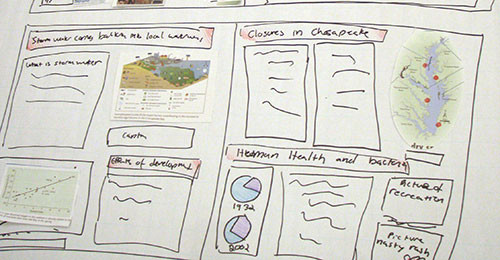
Joanna became a full time Science Communicator as she completed these books and began working on a variety of other projects, in particular, playing a key role in COSEE Coastal Trends. In addition, Joanna now serves as a mentor for IAN interns. The next intern to come from this same Miami University program was Emily Nauman. During her internship, Emily worked closely with Professor Nelson Marshall to design and layout the book "Oceanography: An Observer's Guide" and then worked as a Science Communicator with EcoCheck for several years before returning to Ohio to work with the U.S. Environmental Protection Agency in Cincinnati, Ohio. The third intern from the Miami University program, Melissa Andreychek, will be arriving in May 2010 and working with EcoCheck. Melissa has her undergraduate degree from the University of Pittsburgh and is working on her Masters degree at Miami University.
Examples of science communication products worked on by IAN interns
Two of the IAN interns were summer internships in anticipation of enrolling in the fall semester of University of Maryland's Marine Environmental Estuarine Science autumn semester. Lisa Florkowski from University of Virginia and Ben Fertig from Brandeis University both spent a summer internship and were able to develop science communication skills that served them well during their graduate student tenures.
Two summer interns were still in undergraduate programs, Hilary Stevens from St. Norbert College and Allison Dungan from Randolph-Macon College, and went on to finish their undergraduate programs. After she graduated from Randolph-Macon, Allison worked with Caroline County, Maryland planning department and recently returned to work as an IAN Science Communicator.
Most of the IAN interns joined IAN immediately following their undergraduate degree programs, including Kate Boicourt (Kenyon College), Emily Benson (Colgate University), Lucy van Essen-Fishman (Swarthmore College), Kim Kraeer (Washington College), Christine Thurber (Assumption College), and Kate Bentsen (Cornell University). Kate Boicourt worked on the National Estuarine Eutrophication Assessment, and her internship was extended into nearly a year as a Science Communicator with EcoCheck. Kate then enrolled in a Masters in Environmental Science program at Yale University School of Forestry and Environmental Studies, and in one of her classes was assigned the book "Effects of Nutrient Enrichment in the Nation's Estuaries: A Decade of Change", which she co-authored! Emily Benson wrote a scientific paper during her internship "Using the aquatic macrophyte Vallisneria americana (wild celery) as a nutrient bioindicator" which was published in the scientific journal Hydrobiologia. Emily enrolled in a Masters program at the University of Alaska, Fairbanks where she is currently finishing her degree. Lucy van Essen-Fishman and Kimmy Kraeer developed an interactive game "Trade-Off" with SeaWeb and worked through a substantial backlog of IAN symbols.
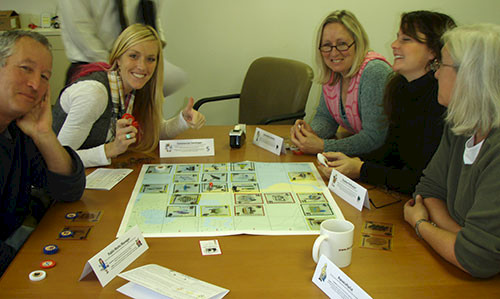
Lucy went on to study Ancient Greek at Oxford University (U.K.) and Kimmy began a graduate program at American University after working as a dolphin trainer at the National Aquarium. Christine Thurber recently finished her IAN/EcoCheck internship and will begin a job with the Maryland Department of Agriculture. Kate Bentsen will continue her IAN internship, videoediting IAN seminars and helping Kate Boicourt with Maryland Climate Change Adaptation strategy report. Christine Thurber and Kate Bentsen worked together to upload all of the IAN symbols into the IAN image library to make them more accessible and searchable.
We have learned several lessons over the 5 years of the IAN intern program. We learned that different academic training or skills that the interns have coming into the program can help shape their internship (e.g., an interest in photography converts to working on the image library). In addition, we learned that having simultaneous interns gives them an opportunity to learn from each other. Interns have enjoyed the diversity of different tasks that they are presented with, but expressed an interest in understanding the context of the different projects they were working on. They have found the orientation helpful, and appreciate being assigned a Science Communicator mentor (e.g., Joanna Woerner at IAN; Caroline Wicks at EcoCheck). Interns have been able to audit classes and participate in various science communication training sessions.
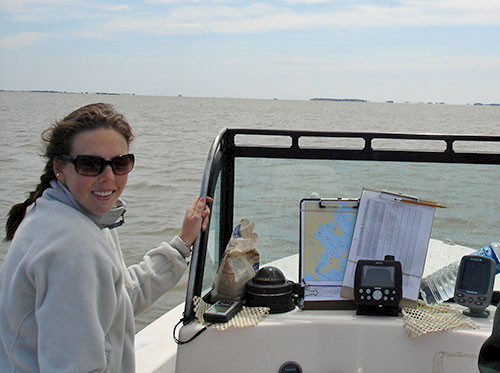
About the author
Bill Dennison

Dr. Bill Dennison is a Professor of Marine Science and Vice President for Science Application at the University of Maryland Center for Environmental Science.






